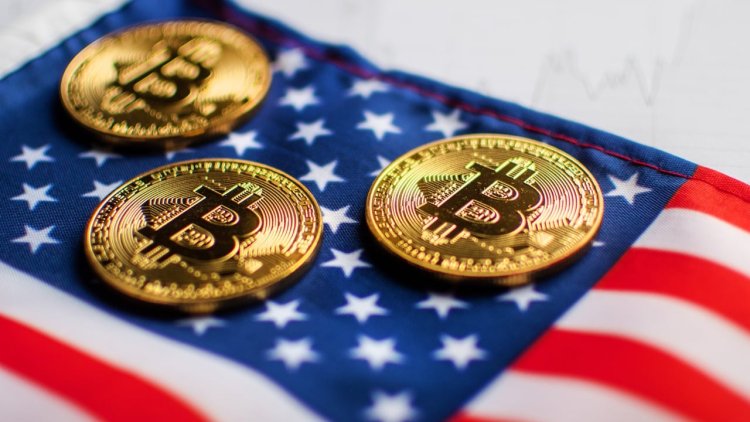A Theoretical Look at What Could Happen If Trump Creates a US Bitcoin Reserve
What if the U.S. under Trump created a strategic bitcoin reserve? Explore this theoretical scenario where bitcoin’s rise challenges fiat currencies, igniting a global financial revolution.

A Theoretical Look at What Could Happen If Trump Creates a US Bitcoin Reserve
Imagine a future where the United States, under President Donald Trump, embarks on a bold financial experiment. In this theoretical scenario, the U.S. could establish a strategic bitcoin reserve, transforming the global financial landscape and heralding bitcoin's rise as the dominant global currency. Here's an exploration of how this could unfold.
Trump’s Bitcoin Gambit: The Dawn of a U.S. Strategic Reserve
On January 20, 2025, Trump is sworn in as the 47th president of the United States, ushering in an unprecedented economic shift. In a groundbreaking move, his administration pushes forward with Senator Cynthia Lummis's proposal to create a U.S. strategic bitcoin reserve. This bill would allow the Federal Reserve to integrate BTC into its balance sheet, securing the nation's financial future amid an increasingly digitized world.
The reserve’s foundation is built upon the 198,109 BTC seized from criminal activities, repurposed not as mere evidence but as the cornerstone of the U.S. government’s bitcoin stockpile. Critics argue this move risks financial instability, but proponents see it as a hedge against fiat currency devaluation and a step toward maintaining U.S. economic dominance.
Hyperbitcoinization Unleashed: A Global Race for Digital Gold
As the U.S. makes its move, other countries quickly follow suit. The domino effect accelerates as nations scramble to acquire bitcoin, with El Salvador’s early adoption vindicated. Major economies such as Japan, Germany, and India initiate their own bitcoin reserve programs. By mid-2025, the term hyperbitcoinization enters mainstream discussions, symbolizing the growing global transition to bitcoin as a standard monetary unit.
Bitcoin’s price surges past $500,000, fueled by institutional and retail demand. The rise of bitcoin-backed exchange-traded funds (ETFs) and products further strengthens its position, turning companies like Microstrategy into financial giants. But as bitcoin’s dominance increases, the underlying weaknesses of fiat currencies are exposed, and countries relying on the U.S. dollar struggle to maintain confidence in their own economies.
Fiat Collapse: The Price of Bitcoin’s Meteoric Rise
By 2026, the relentless ascent of bitcoin begins to unravel fiat currencies. Weaker economies face hyperinflation, while even the U.S. dollar experiences a dramatic loss of purchasing power. The Federal Reserve’s bitcoin holdings grow exponentially in value, but the benefits are concentrated in the hands of bureaucrats, leaving average citizens to endure economic hardship.
Retail investors, realizing the significance of self-custody, begin withdrawing their bitcoin from centralized exchanges. At the same time, institutional investors face challenges adapting to the new reality. ETFs and custodial services, once seen as accessible entry points into bitcoin, become targets for government intervention as policymakers scramble to regain control.
A New Executive Order: History Repeats Itself With Bitcoin
The chaos caused by the collapse of fiat currencies leads to political upheaval. In 2028, a new Democratic administration takes power, promising to restore order. In an executive order mirroring Franklin D. Roosevelt’s 1933 ban on gold hoarding, the government orders the confiscation of all bitcoin held by U.S. entities—public companies, exchanges, and ETFs. The government justifies this seizure by citing national security concerns, branding bitcoin hoarders as economic saboteurs.
As the seizures unfold, bitcoin’s price continues to soar, reaching $1 million per coin. Despite the government’s efforts to control the asset, bitcoin's decentralized nature ensures its value remains robust.
Self-Custody Triumphs: The Freedom-Lovers’ Final Victory
Amid the chaos, a quiet revolution unfolds. Individuals who embraced self-custody and stored their bitcoin in hardware wallets emerge as the true victors. As centralized institutions crumble under government pressure, these self-sovereign holders thrive. In local communities across the globe, bitcoin becomes the backbone of economies, enabling peer-to-peer transactions free from government oversight.
As technology advances, the Bitcoin network evolves to handle billions of daily transactions. This digital renaissance ushers in a new era of financial freedom, where individuals regain control over their wealth, independent of centralized institutions.
Conclusion: A Path Toward Financial Independence
While this scenario remains speculative, the potential of a world where bitcoin becomes the dominant global currency is not beyond imagination. If it comes to pass, the lessons of the Bitcoin revolution could reshape the global financial system, emphasizing the importance of self-sovereignty and decentralization. In a world where control is increasingly centralized, those who embrace financial independence could ultimately thrive.
What's Your Reaction?















